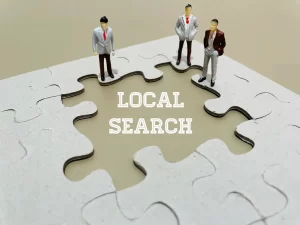Everyone who has a company, a trade or offers some kind of service has – or should have – a sales strategy well defined. It is what, in the end, will serve as the basis for achieving what every entrepreneur wants: profit, which generates growth and gives the business a long life.
More than an idea, a sales strategy deals with what is expected of each company.
Does it exist to sell to the final consumer? Is your focus on selling little, but with a very high average ticket? Is the idea to produce in the long term or is the focus to produce in one week to supply consumers the following week?
All these questions help define a sales strategy. Therefore, it is usually defined by managers, by professionals who follow the company’s own numbers, by people who are aware of market trends.
As we will show throughout this article, there are numerous strategies that have proven to be efficient over the decades. The point is that each sector of the economy and each business segment has its peculiarities. What works for one might not work for another.
What they all have in common is the way in which a commercial strategy is built. Next, we’ll show you the best guidelines for you to assemble yours.
Mapa do Conteúdo:
ToggleWhat is a sales strategy?
Sales strategy is a set of guidelines aimed at building the brand, growing sales and increasing revenue. It is defined by company managers.
Also called commercial strategy, it aims to search for new customers. To do so, you need to rely on market research, consumer trends, lead generation, average ticket to look for, among others.
It is important to emphasize right away that sales strategy is not the same as sales techniques. Although the concepts are related, they refer to different aspects.
The sales strategy deals with the commercial objectives that the company wants to achieve, in what period of time and how to achieve this.
Sales techniques, on the other hand, are the tactics used by the sales team to reach the objectives set by the company’s board of directors.
There are numerous sales strategies, applied and tested by the market over the decades – and which have developed even more in recent years, mainly from the changes in the way of consumption and the growth of online sales.
Yet they all have aspects in common. Knowing the market in which it operates, defining a persona, having very clear objectives, knowing how to price products or services and, increasingly, focusing on the customer and not on the sale, are points that have already proven to be effective in the application of any strategy. of sales.
Another point in common to all of them are the three basic phases: finding potential customers, conquering them and keeping them.

Finding potential customers
Although with different objectives, this phase is common to companies of all sizes and of all ages, whether they are centenarians or startups that are now entering the market.
New companies need to find potential customers to place their product or service proposal on the market, while established companies seek new consumers to expand their revenues or, at least, maintain commercial stability considering the lifetime value seen in all segments.
If you are looking for new potential clients, you can search for information on blogs, YouTube and even access this article about tips for starting your online business.
There are several ways to find potential customers. You can make use of outbound marketing or inbound marketing strategies – in the ideal world, jointly. The fact is that prospecting needs to be constant for a sales strategy to be good.
When opting for active prospecting, it can be done through advertisements in traditional media, offering discounts or investing in approaches such as cold calling, especially cold call 2.0.
In the B2B business environment, one of the most traditional ways to get new customers is to participate in trade fairs. Common for many decades, they were on standby from 2020 due to the pandemic, but will certainly resume with force.
Business fairs have the great advantage of bringing together companies whose main focus is selling to other companies – and therefore, arouse interest in already qualified leads.
Another way to generate new leads is through digital marketing strategies, especially content marketing. It is a method that requires less investment, but whose results are expected in the medium and long term.
Conquering new customers
Earlier, we made a caveat that sales strategy is not the same as sales techniques. In it, we said that they were concepts that were related. And it is precisely at this stage that this happens.
After prospecting for new leads, the moment comes when it is necessary to win them over and turn them into customers effectively. This is the job of professionals like Business Development Representative, Sales Development Representative or even the sales professional himself.
Conquering new customers is an exercise that demands method, persistence and empathy.
A method is needed because this is the only way to get new customers that are not based on luck or just in case.
A lot of persistence is also needed because, especially in B2B businesses, these are agreements with new companies that are very likely to present a series of sales objections. As for empathy, this appears more and more as a differential to get good deals.
So much so that consultative selling is on the rise. In this model, more than a salesperson, the professional puts himself in the customer’s shoes to understand what his pain points are and how to design the best sales model for him.
The idea of this view is to show the customer that he is, above all, a partner. And that’s because the consultative sales model best fits the win-win definition, which is good for both buyers and sellers.
Whenever deals are established that are good for both ends, a virtuous circle is created: whoever buys knows that it will solve a need and that it will have a good return; who sells, sees an increase in the average ticket and gains a loyal customer.
And here we go to the next phase of the sales strategy.
Loyalty customers
If conquering new customers is the goal of every company, turning them into loyal customers is the best of both worlds. For at least two reasons: it guarantees long-term business, and prospecting new ones is always harder than keeping old ones.
Loyalty to a customer means understanding him well. For this, monitoring its history and being aware of changes in the market is essential. This will allow you to make the best offers, at the best times and for the right price.
The objective of this phase of the sales strategy is to surprise the customer. In the same way that you went after all of its features when fitting it into the Ideal Customer Profile, it’s also time to demonstrate that you know how to keep helping. You don’t have to wait for it to manifest itself.
In addition, satisfied customers work as a good form of advertising. They will start to defend your brand and you can even include them in your portfolio.
Another advantage of having loyal customers is the increase in the average sales ticket. It is natural that companies negotiating for the first time do so with greater reservations – after all, no matter how much information is available, it is something new and involves high investment.
On the other hand, companies that already have a relationship history understand each other more easily, shorten steps in the sales funnel and they have everything to negotiate larger volumes.

How to build a sales strategy?
Establishing an effective commercial strategy involves recognizing that each market niche has its specificities – and, therefore, will require different choices.
The way to define it, however, is similar. Follow along.
Know who your customer is
This aspect is basic for any company and at any level. It is useful to define a good sales strategy, to choose the best marketing strategy and also to choose the best sales techniques. But it goes further: it is even worth knowing what to offer.
For this, the first step is to establish the Ideal Customer Profile. It defines the type of company – segment, size and region of operation – and with whom you want to do business within it.
This becomes important, especially in business between companies, because it offers focus, which allows the best solutions to be offered to the potential client.
Furthermore, in B2B sales, knowing this profile makes it possible to point to companies that are more likely to close good deals with yours. We are not simply talking about a sale, but those with a higher average ticket and with chances of a long-term partnership.
After defining this profile, it is necessary to go further and establish a persona – also called a buyer persona. She is an embodiment of what is considered the ideal client. It is a fictional character, created based on real behavior and data, supported by demographic information and previous research.
The persona allows you to have a better idea of who usually does business with your company: whether they are men or women, how old they are, what education they have, how much they usually spend, what their motivations are, and so on.
In B2B businesses, defining the persona helps to identify the best leads within the companies that the prospecting team identified as having the greatest potential to negotiate with yours.
Identify your competition
Getting to know who operates in the same segment as you is essential to design an effective sales strategy. This goes for both your direct competitor and the competitor of the company you want to do business with.
Comparing the strategies that are applied by companies that are referenced in the market is a good way to establish which are the most effective and which give less result. As we said at the beginning, there are several well-known and widely applied commercial strategies, but it is necessary to identify which are the best for your segment.
In addition, knowing what the competitor offers allows your company to go in search of the differential. If the products are similar, defining a better pricing method may be worthwhile. Offering ways to improve the customer experience, ditto.
Have well-defined goals and objectives
Although we often use them as synonyms, objectives and goals are two different things, but they generally need to go together.
Your company, for example, might aim to grow 20% in the next year. Well, to achieve that, you need to set goals: increase sales by as many percent, invest in machinery, hire new employees, and so on.
An effective sales strategy has to be supported by well-defined objectives and goals. But for that, they need to be viable. It is not enough simply to decide that you want to grow, you must work on bases that allow this.
Once again, keeping up with the market, the latest trends and forecasting real revenue is essential. As we will show later, being on top of all your company’s metrics, and making a historical comparison, will help you take each step safely.
A commercial strategy that is applied based on clear objectives has everything to give the expected result. This is because each step is taken thinking about the fulfillment of a certain goal. It is the sum of all of them that will lead your company to reach the final objective.
Empower your team
You can have the best product or service to offer, but you can also have the best possible sales strategy for your business. But all this will be of little use if you don’t also have the best sellers.
So train your team!
Hold regular meetings not only to present the goals and objectives, but also to cover everything about your product and company. The differentials, the potential, why what you have to sell will make a difference in your customer’s life.
In addition to motivating your sales team, this will help them become more assertive and more easily overcome objections that arise in negotiations.
The great sales gurus never tired of repeating that well-trained teams with well-defined functions boost results. In general, more experienced sellers are better at closing sales, while less experienced ones are more proactive and agile in capturing new leads.
As you can see, you don’t need to set up a dream team of salespeople, just train the team so that it becomes the dream team.
And remember: Protagnst specializes in B2B sales. Get in touch with us and we’ll show you the best ways to boost your results.
Face the objections
Potential clients who have difficulties closing a deal are common. As long as your product or service is good and solves his problem, it is common for the lead to counter argue and show resistance to finalizing an agreement. Dealing with objections, however, is part of any salesperson’s life.
Bearing in mind that objections are common is the best way to prepare for them. A good seller is one who knows that the potential customer may raise doubts, questions and impose some difficulties to close a purchase – and, for this very reason, will be prepared to answer all of them.
One of the most effective ways to deal with objections in sales is to map out all possible obstacles and create an “objection matrix”.
This will allow you to answer the lead’s questions as soon as they arise, demonstrating knowledge on the subject and passing credibility on the product or service.
In case the resistance has to do with financial issues, by having prior planning it will be possible to present possible solutions or even already have more viable alternatives to guarantee the negotiation sequence. This is precisely why consultative sales are so in evidence.
To assemble a good matrix of objections, the ideal is to seek the questions and their answers with the various sectors of the company, from marketing to production. Asking each one of them about their strengths and possible bottlenecks in this area, as well as solving them, is an efficient way to prepare for possible resistance from potential customers.
Track your metrics
Keeping track of the different metrics within a company is the daily work of any manager, and they also help to improve the sales strategy.
Evaluate how prospecting for new leads is going, how many are qualified and what the sales conversion rate allows you to have a more accurate diagnosis of your own business.
Just as important, whenever the metrics do not show the expected results, they make it possible to reassess what has been done. This makes it easier to identify bottlenecks in the sales funnel and, from there, redefine strategies.
Not properly tracking metrics can mean wasting time, revenue, and opportunities. On the other hand, it makes it impossible to have real bases of growth potential, which hinders the creation of medium and long-term objectives.

Commercial strategies for different segments
The different sectors and segments of the economy have their peculiarities and, therefore, must make use of their own strategies. Although the basis and final objectives are similar, the path to the customer’s purchase journey can be longer or shorter, simpler or tortuous.
B2B sales strategies
Business between companies moves trillions of dollars every year around the world. Because it involves a high average ticket, it is a very good segment to invest in.
The high sums involved and the peculiarities of this type of trading, however, make trading strategies quite unique. One of the main ones is that it demands professional and highly specialized sellers.
B2B deals are made between people with a lot of knowledge and decision-making power. On the part of those who buy, it involves someone who certainly understands a lot about the product and who has decision-making power – or, at least, easy access to those who do.
Therefore, the sales strategy in this case necessarily needs to be supported by a lot of market research and by a salesperson with an advisory profile. After all, the buyer he will be dealing with is already someone who is on top of market trends, so it is necessary to invest in the differential.
Having a well-defined who your company’s buyer persona is, knowing your competitors and being flexible are three fundamental requirements.
Another important point for those whose commercial strategy is business between companies is to recognize that it is a more time-consuming and costly process than those that focus on negotiating with the final consumer. But, of course, the financial return is also much greater.
Complex sales strategy
It has that name and it is not by chance. These are businesses that require many steps, bureaucracy and engagement from the most diverse sectors. In general, they involve very specific niches and require different types of approval.
Imagine, for example, that your company trades parts or machinery for a shipyard that is producing submarines for the government. The construction itself already involves many steps, a few years of work and the need to overcome all kinds of bureaucracy.
Of course, this whole – costly – process generates good profits, which is why many companies choose to have a strategy aimed at complex sales.
To be successful in them, however, the salesperson must have a consultative and attentive profile throughout the entire process – not only during the sale, but also following the progress of the after-sales process with the customer.
Thus, the entire process needs to be extremely well structured and have a fully prepared sales team. Showing yourself willing and ready to meet any possible demand makes that sale have the expected result and, more than that, paves the way for new business.
technical sales strategy
Companies that focus on technical sales should look for a high average ticket and the possibility of a large sales volume, since this type of business demands the involvement of professionals with a lot of knowledge and the probable need to include the training offer.
Technical sales refer to very specific niches and products that demand a lot of know-how.
Because of this, technical sales are expected to take longer, especially if the entire cycle is considered, from prospecting for new customers to team training after the bases have been defined by the buyer.
Thus, the sales professional needs to be at the same time very qualified from a technical point of view, assertive and resilient.
If well structured, however, focusing the sales strategy on a more technical sector can be especially profitable. This is especially true if the same model can be partly replicated for different customers.
Sales strategy for consulting and services
Sell consulting services also involve investing in some of the product sales assumptions, but with the necessary adaptations.
Building a strong brand and being recognized in the market is an important step. But for this to happen, you need to focus and define the target audience well.
The definition of the target public enables a more efficient communication, adequate for your public and made by the best means. It also allows you to offer more assertive services to customers. The sum of this generates better conversions.
Conducting market research is essential, and a good sales strategy involves recognizing that personal taste does not necessarily represent market preference. Therefore, it is necessary to be aware and open to the latest trends.
Consulting services are increasingly sought by companies, as they unite their productive potential with the expertise of those who work in the field. Protagnst, for example, specializes in lead generation and capture for business between companies. Our focus is on helping other companies sell more – and better.

Final considerations
Every manager works towards the financial health of his company. And, more than ensuring day-to-day cash flow, financial health is also about knowing the ability to take the next steps. Thus, a good manager is one who looks both to the present and to the future.
Projecting the future of a company involves forecasting future sales. And reaching an answer on this is not an easy task: it requires understanding the market, following the direction of the economy, understanding in detail one’s own productive potential, retaining customers and going in search of others with some predictability.
All this is taken into account when defining the best sales strategy. They serve as a guide and allow the sales team to focus on the most appropriate techniques for each segment.




